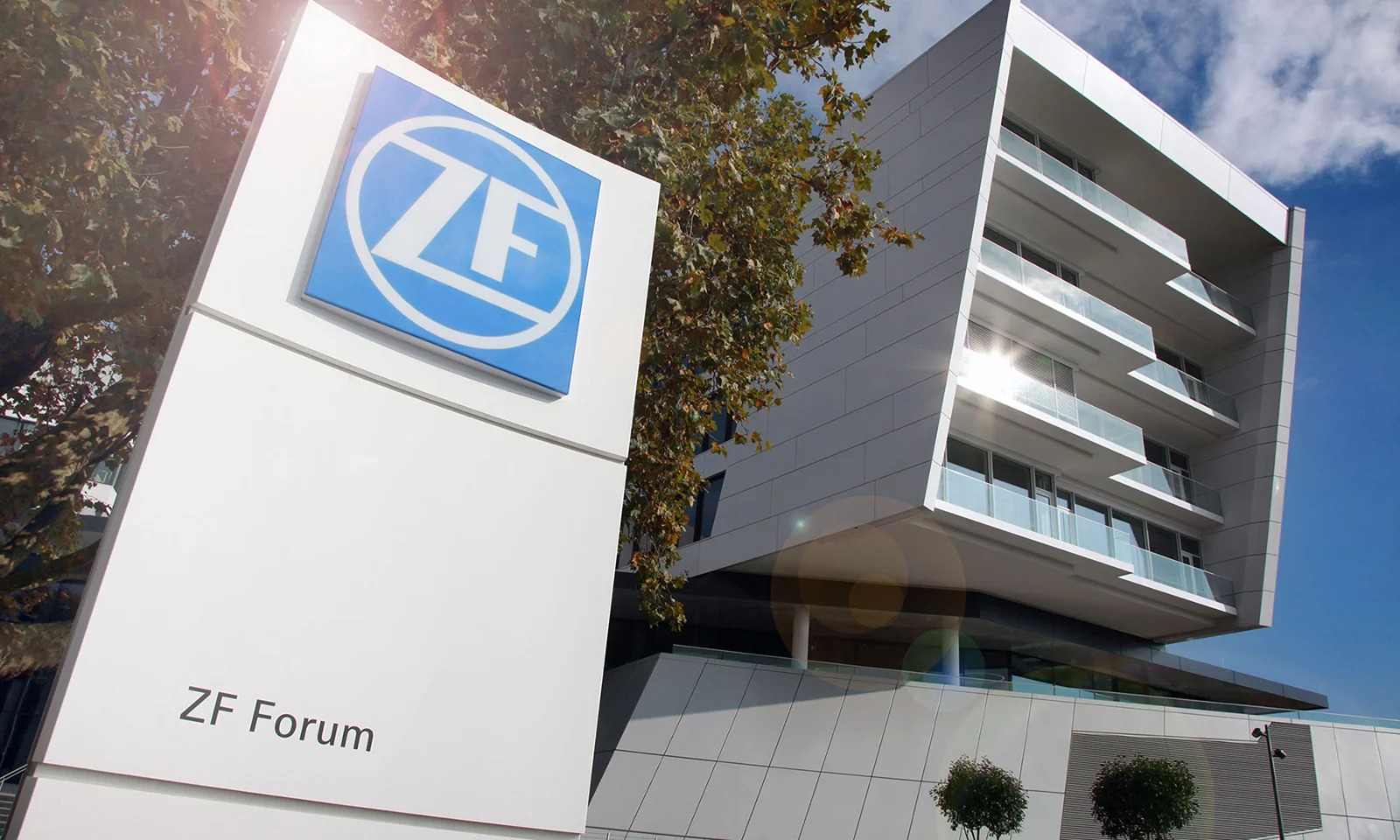- Explore our industry expertise
- Success stories
- Avoiding costly peaks in demand
Avoiding costly peaks in demand

Autonomous system
Forecasts energy requirements and manages systems autonomously to avoid peaks in demand
Long-term energy cost savings
Rapid amortization and ongoing cost reductions
Efficient production
No disruptions or interruptions to production
Challenge
ZF leverages the benefits of autonomous peak load management, resulting in sustained reductions in energy costs
Energy prices continue to rise and peak loads can quickly become a very expensive headache. For a company, exceeding contractually agreed base loads by just a single megawatt can drive up electricity costs by a six-figure number. Why? Because every peak in demand places an extra burden on the power grid and this trickles down to electricity bills due to high energy prices. Consequently, to keep a tight rein on costs you have to flatten the peaks and troughs in energy loads. Does this mean using a system capable of predicting and reporting what’s happening before there’s any risk of exceeding limits? For many years this has been the stuff dreams are made of for energy managers – a system that not only has what it takes to anticipate excess consumption, but one that takes preventative action autonomously, without impacting ongoing production. Or is this the stuff of science fiction? Not at all. It’s exactly what GFT introduced for ZF, the supplier of automotive technology.
ZF has set itself the goal of continuously optimizing energy consumption throughout its international operations. A preliminary analysis of energy consumption identified peaks in electricity loads. These were driving up costs and were consequently defined as a priority for taking action. The company now uses an intelligent energy management solution based on the IoT platform SPHINX OPEN. As well as providing detailed forecasts, it also works autonomously in the background to avoid peak loads at two production sites.
If ZF was going to avoid peak loads effectively, it would need total transparency – in real time – meaning accurate forecasts of energy demands so that pre-emptive action could be taken as and when needed, naturally without compromising production.
After conducting a detailed and thorough analysis, GFT proposed the introduction of an autonomous system for managing peak loads based on SPHINX OPEN. The rule-based solution would also forecast demand using machine learning processes in the cloud.
Engagement
Avoiding peaks in energy consumption without negative impacts in production
ZF already had a strong foundation to build upon thanks to an outstanding digitalized network that captures any systems that either require or actually generate energy. As a result, a uniform architecture was already in place, offering bidirectional connection via OPC. The SPHINX OPEN load management system (LMS) now enables ZF not only to predict energy requirements, but also to control and manage them accordingly. To do this, energy managers define rules for temporarily shutting down systems that consume energy or switching on systems that generate energy. Operators can also lay down any parameters that should be adhered to and, if necessary, make independent adjustments. The system can operate autonomously when managing loads – it requires zero manual intervention.
The system is fed with continuous data on power generation, consumption and demand. It is also supplied with information on any other components connected to the energy system. This is enriched with historical data, weather forecasts and production planning data, thus making it possible to set priorities on a minute-by-minute basis and define which system components should be switched on or shut down to ensure loads remain within defined levels for a defined period.
At the heart of the solution lie digital twins, providing virtual mirrors of all relevant machinery based on SPHINX OPEN. As well as updating energy readings, these also provide continuously reviewed information on energy sources and the current degree of system flexibility. By linking up-to-the-minute data with historical readings and external data, the system produces the required forecasts based on intelligent estimations.
To do this, it is given a simple and straightforward target: don’t exceed defined loads. It then adheres to this target by gathering data from all machines or systems producing or consuming energy, checking and reviewing information every minute. Responsibility for data connections, evaluations, monitoring and forecasting is given to the coordination system that lies at the core of this solution: the Model in the Middle. Its architecture makes it possible to link digital images of all data sources bi-directionally, such that the originators of data not only submit information, but also derive benefit from this information in executing optimization protocols. The Model in the Middle also reacts to changes in operational parameters, technical problems and system failures by autonomously initiating predefined remedies. For example, in the event of an impending outage, corrective action may be to postpone energy-intensive processes or place certain equipment on hold. These predefined rules are set up and cataloged by ZF experts, who regularly compare and contrast parameters with operational requirements. The open interfaces offered by the system make it possible to connect up any required control technology, as well as external sources of data on temperature forecasts, wind levels and sunshine. The result is a comprehensive energy management system that can be extended at any time.
Benefit
Long-term cost savings and unrivaled returns on investment
Over time, the solution introduced by ZF has evolved into an integral part of its energy management strategy. On a day-to-day basis, the system makes continual adjustments to changing conditions and regulates parameters. It also makes it possible to predict potential peaks in demand up to a week in advance, providing ZF with valuable information for production planning.
The autonomous solution has also brought long-term benefits when it comes to energy management:
- Peaks in demand can be forecast and automatically smoothened based on predefined rules – permanently cutting energy costs
- Bottom line, peak consumption has been reduced from 24 to around 20 megawatts
- The investment paid for itself within 18 months
“SPHINX OPEN was the only system to enable us to hit our ambitious peak load management targets for reducing energy consumption. That’s a genuine USP.”





